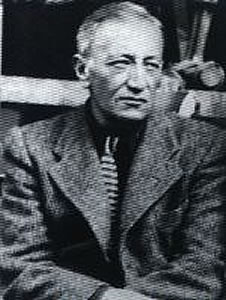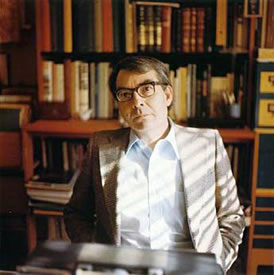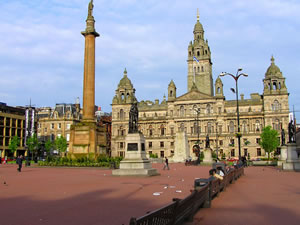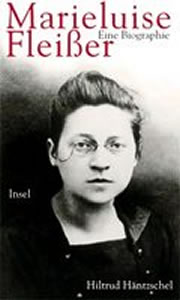De Turkse schrijver Sait Faik Abasıyanık werd geboren op 23 november 1906 in Adapazarı. Zie ook alle tags voor Sait Faik Abasıyanık op dit blog.
Uit: Hisht, Hisht!… (Vertaald door Ufuk Özdağ)
„Maybe it’s a bird. Maybe it’s a tortoise. Maybe a hedgehog. Or maybe a fish, a monster, calling out from the sea nearby. Maybe a cormorant. Maybe a mihaliki1 bird.
Or better still, why don’t I, myself, start a “hisht hisht.” Right at that instant, I began murmuring a sound, not at all resembling the hisht hisht sound that was going on . . . a sound, though I wrestled, that would not resemble the sound I had been hearing.
All of a sudden, a man and a woman appeared ahead of me. They asked for the road to Kalpazankaya.2 “You’re right on it,” I replied. It seemed as though the road moved . . . as though they didn’t walk. They became distant to me in a matter of steps. I noticed the priest’s son lying facedown among the sheep. From his face rose a creature, silly and like a freckled rooster. He wiped saliva from his mouth. He grabbed the lamb by its legs. He fell with the lamb. He kissed the lamb on its nose. He stared about with an ugly, silly, jerk-off’s face. Now I was in a flower field. It was, no doubt, some kind of bird that kept saying “hisht hisht” to me. Y’see, there certainly are birds like that. They do not go “chirp chirp”; they go “hisht hisht.” A bird it was, a bird.
A man was spading the ground. He was stepping on the metal of the spade, and was tilling the soil, reddish in color, upside down.
“Hello there, my fellow friend!” he said.“

De Amerikaanse dichter, schrijver, vertaler, schilder en illustrator Guy Mattison Davenport werd geboren op 23 november 1927 in Anderson, South Carolina. Zie ook alle tags voor Guy Davenport op dit blog.
Uit: The Dawn
„At the gymnasium he had finished his presses and curls, walked springfooted to the showers, tossed his shorts and jockstrap into his locker, and lifted his face to the cold torrent that sprayed him until he was gooseflesh and shivers, his scrotum tight.
Wittgenstein’s mornings were spent in gardens, forests, Cambridge fields. His hands in the pockets of his leather jacket, he walked around trees, his eyes puzzled by their beauty.
(…)
The attendant Hans, a tall, steep-chested boy with a wad of hair at his jugular notch, had brought him a fresh towel. A redstone kouros from Sounion, this strapping young Amsterdammer, translated into the slenderer grace of the modern gramivore. He wore only a thin-bretelled blue undershirt that rucked under his pectoral mass but stretched creaseless across his myronic flanks.
Adriaan regarded his stout cock with philosophic admiration, male envy tempered by apolegamy.“

Guy Davenport (23 november 1927 – 4 januari 2005)
De Schotse schrijver en historicus Nigel Tranter werd geboren op 23 november 1909 in Glasgow. Zie ook alle tags voor Nigel Tranter op dit blog.
Uit: The Queen’s Scotland
“Monikie, Craigton and Newbigging.
This rural parish lies eight miles north-east of Dundee and four north of Monifieth, and is readily identified, both on the ground and on the map, by the double Monikie Reservoirs of the Dundee Waterworks, of 73 and 46 acres, which, with a third one two miles to the north at Crombie, supply some 650 million gallons. The parish is medium-sized, of about 9000 acres, and contains the villages of Craigton and Newbigging. Monikie itself consists of two hamlets, the Kirkton and that at the former railway-station a mile to the west; plus another, reduced to a scatter of houses, at Guildy farther to the east. Two small ranges of hills divide the parish into three districts of differing character, traversed by the streams and dens of Monikie, Pitairlie and Buddon Burns.The larger, Monikie, hamlet at the west end of the reservoirs, is quite an attractive place, with a surprisingly large granary, formerly a seed-crushing mill, to find in such a rural site, the works of the Panmure Trading Company, which dries and stores grain from a wide area, especially barley for the distilleries. The branch-line and former railway-station are closed. Half a mile to the north-west is the highly interesting Auchinleck or Affleck Castle. This is an excellent example of the sturdy and massive free-standing tower of the late 15th century, little altered, five storeys and 60 feet high, with corbelled parapet and two distinctly unusual square caphouses, the flat roofs of which form lofty watch-platforms.“

Nigel Tranter (23 november 1909 – 9 januari 2000)
Glasgow
De Duitse schrijfster Marieluise Fleißer werd geboren op 23 november 1901 in Ingolstadt. Zie ook alle tags voor Marieluise Fleißer op dit blog.
Uit: Hiltrud Häntzschel: Marieluise Fleißer. Eine Biographie
„Zu Marieluise Fleißers 70. Geburtstag im November 1971 forderte der Dramatiker Franz Xaver Kroetz in der Süddeutschen Zeitung: “Der Suhrkamp Verlag sollte endlich auch eine Gesamtausgabe der Fleißerschen Werke herausbringen.” Es gab damals nicht nur keine Gesamtausgabe, das literarische Früh- und Hauptwerk der Schriftstellerin Marieluise Fleißer war so gut wie verschollen, ungelesen, unüberprüfbar. Ein Jahr zuvor erst hatte “das Wunder” begonnen, das Wunder ihrer Wiederentdeckung, Wiedererkennung, begleitet vom großen späten Ruhm.
Zweimal in ihrem Leben hatte sie wirklich Erfolg. Der erste, 1929 mit der Berliner Aufführung der Pioniere in Ingolstadt, war so glanzvoll wie umstritten und brach – in Verbindung mit persönlichen Umständen – ihre Karriere ab. Der zweite am Ende ihres Lebens kam zu spät, aus Ruhm wurde Nachruhm, aus Nachruhm Legende. Dazwischen liegen Jahrzehnte eines unglücklichen, engen, einzig an Mangel, Entbehrungen, Enttäuschungen reichen Lebens: materieller Mangel, nackter Hunger und völlige Mittellosigkeit, Mangel an Liebe, an erfüllter Sexualität, Mangel an intellektuellen Kontakten, an Austausch mit Ebenbürtigen, Mangel an öffentlicher Anerkennung ihres Schreibens, an Erfolg. Wären da nicht ihre “Fluchtwege im Kopf”, ihre einzigartige dichterische Könnerschaft, es lohnte kaum, von ihr zu erzählen.
Heute ist Marieluise Fleißer auf sonderbare Weise unbekannt und prominent zugleich: Es gibt Marieluise-Fleißer-Straßen und eine Briefmarke, ein ICE führt unter ihrem Namen. Ihre Lebensgeschichte – oder was davon in die Legenden einging, das Brecht-Erlebnis vor allem – hat sich verselbständigt, wieder in Literatur verwandelt.

Marieluise Fleißer (23 november 1901 – 2 februari 1974)
Omslag biografi
Zie voor onderstaande schrijver ook mijn blog van 23 november 2008.
De Bengaals-Indische schrijver Nirad C. Chaudhuri werd geboren op 23 november 1897 in Kishoreganj.
